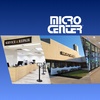Despite HUDS' own excitement for the plan and its current success, Condenzio admits that some people still were not ready to immediately jump on the bandwagon while this renovation was still in the planning stages.
Condenzio attributes this to what he calls "the FUD factor" (for fears, uncertainty and doubts)--something which HUDS anticipated and worked hard to allay.
"There were so many questions and this process was about answering them," Condenzio says.
Convincing people about the merits of the revolutionary type of change was not any easy task, they admit.
But as HUDS worked with the groups of students, House Masters and other College staff, they were able to use data to prove that the system would work.
Masters for their part were concerned about whether such a new system could actually be successful at Harvard--not to mention having more technical questions about how the renovations would affect their buildings.
Armed with computerized data tracking dining hall usage at different points of the day and on different menu days, HUDS was able to show that the new system of cooking food in smaller doses would not cause massive backlogs in the dining hall.
Read more in News
Students Hit the Campaign TrailRecommended Articles
-
HUDS Releases New Pocket ID Pal"What's crimson and orange and read all over?" According to Harvard University Dining Services (HUDS) and University Hall, the answer
-
The Future: Hot Pockets AheadWithin seven years, Harvard University Dining Services (HUDS) will recreate most House dining halls in the image of Eliot and
-
Dining Services Slots Midnight Snack for FallCome next fall, the "Brain Break"--a Harvard University Dining Services (HUDS) invention that will bring late-night snacks to House dining
-
HUDS May Switch to Peet's CoffeeWhen Peet's Coffee and Tea opened its first Cambridge branch earlier this year, the California chain known for its strong
-
Students Work With HUDS TO Improve Quincy Dining HallFor Quincy resident David P. Tuttle '02, a sandwich just isn't quite right without rye bread. That creates a problem
-
Harvard Weathers March Nor'EasterWhile students frolicked in the snow yesterday and enjoyed the many canceled classes, dining hall workers did not get a













